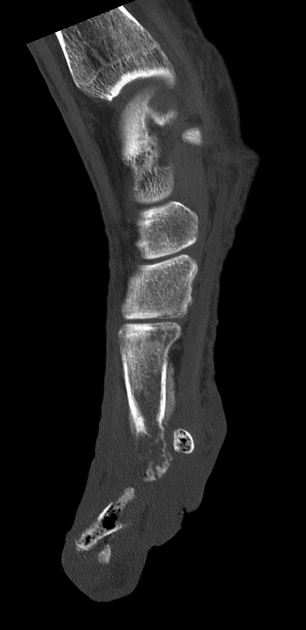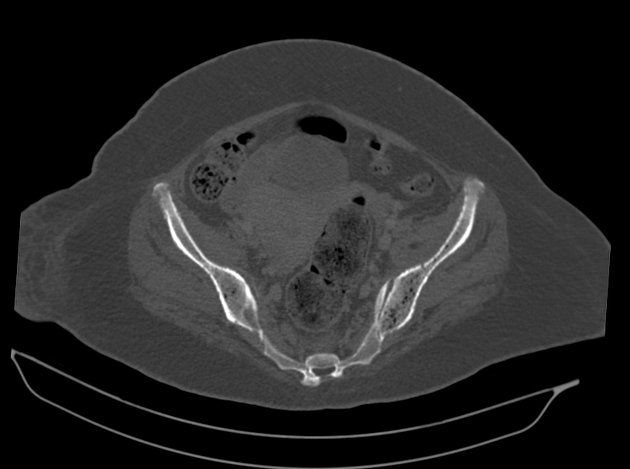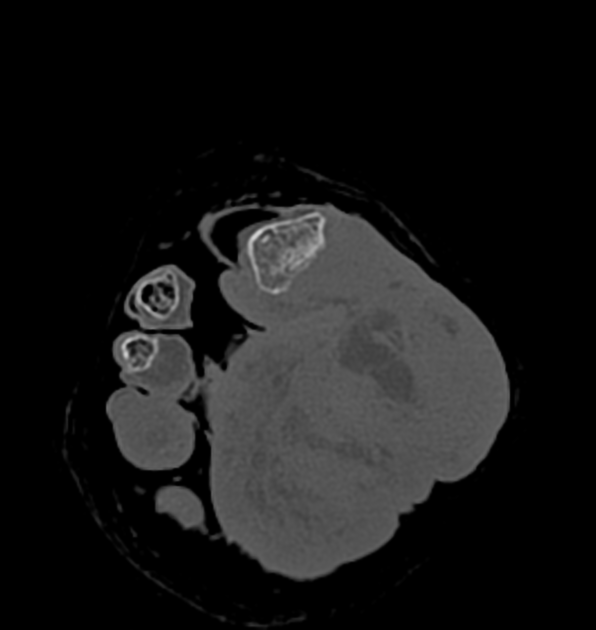Emphysematous osteomyelitis is a rarely reported variant of osteomyelitis which is due to infection with gas-forming organisms.
On this page:
Diagnosis
Gas in the bone is diagnostic and may also be present in nearby soft tissues. Swabs or biopsies may identify the causative organism.
Pathology
Commonly reported organisms are Gram negative bacteria such as 1:
Fusobacterium necrophorum
Escherichia coli 4
Bacteroides spp.
Klebsiella pneumoniae
Bacteria may seed the axial skeleton through the blood stream whereas foot infection can occur due to ulceration of tissues as a consequence of ischemia or diabetes and is likely to be polymicrobial. Comorbidities are common.
Location
The vertebrae may be involved in ~40% of cases 1; pelvis and foot infection are also reported.
Radiographic features
It is characterized by the presence of intraosseous gas (pumice stone sign) accompanied by other signs of bony and soft tissue infection.
Treatment and prognosis
Urgent treatment with intravenous antibiotics helps to limit the spread of disease. Devitalised tissue in the foot has no blood supply and is treated by amputation 5. Mortality can be up to 32% 1.
History and etymology
It was initially described by P C Ram and colleagues in 1981 2.







 Unable to process the form. Check for errors and try again.
Unable to process the form. Check for errors and try again.